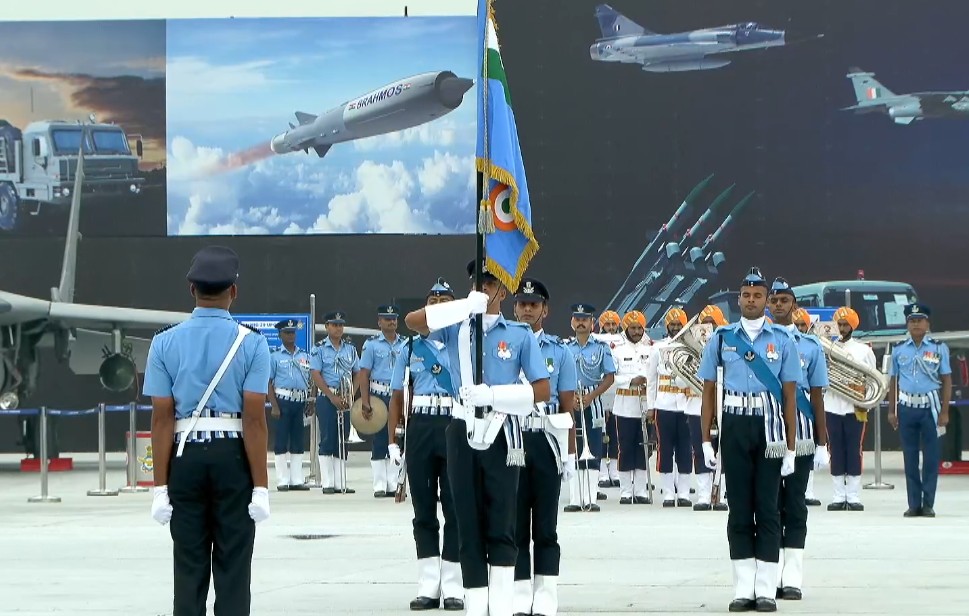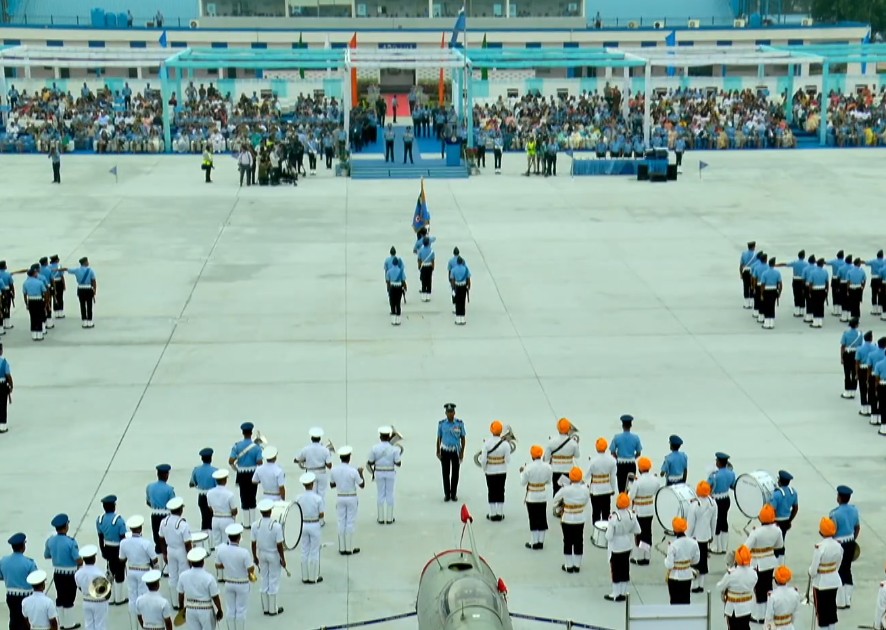The 93rd Indian Air Force (IAF) Day was celebrated with grandeur at Hindon Air Force Station on Wednesday, paying tribute to the valour, discipline, and professionalism of the Air Warriors who safeguard the nation’s skies. This year’s celebrations carried special recognition for Operation Sindoor, a defining chapter in the IAF’s operational history.
Chief of Air Staff, Air Chief Marshal A.P. Singh, addressed the Air Warriors, highlighting the operation as a “shining example of what can be achieved through meticulous planning, disciplined training and determined execution.” He lauded the performance of indigenously developed weapons and platforms that delivered precise, high-impact strikes, restoring the rightful place of offensive air action in the national consciousness.
Air Chief Marshal Singh also recalled the Air Force’s historic achievements, from the 1948, 1971, and 1999 wars to the destruction of terrorist camps in Balakot, underscoring the Air Force’s dual role as both the protector of skies and the guardian of national honour. He praised the integration of new systems and weapons into operational plans, noting the increased culture of accountability, safety, and operational readiness among air warriors.
Operation Sindoor, conducted in May 2025 following the Pahalgam attack, involved precision strikes on nine terrorist camps across Pakistan-occupied Kashmir and deeper inside Pakistan. Using advanced indigenous platforms and the Integrated Air Command and Control System (IACCS), the operation demonstrated India’s growing technological and strategic edge. Air Chief Marshal Singh described the operation as a reaffirmation of air power’s decisive role in shaping military outcomes within days.
The IAF’s humanitarian efforts were also highlighted, particularly Operation Sindhu, carried out in June to evacuate Indian nationals from conflict zones in Iran and Israel. Air Chief Marshal Singh emphasized the speed, reliability, and compassion with which the Air Force executed these missions, often under hazardous conditions.
The day’s celebrations included a massive parade at Hindon Air Base, where Air Chief Marshal Singh inspected the march past of Air Warriors. The parade showcased fighter jets such as Rafale, Sukhoi Su-30MKI, MiG-29, and the recently retired MiG-21 Bison as a tribute to over six decades of service. Indigenous platforms including the Netra AEW&C, Akash Surface-to-Air Missile System, C-17 Globemaster III, C-130J Hercules, Apache attack helicopters with Longbow radar, and the Advanced Light Helicopter were also on display, demonstrating the IAF’s operational strength and technological capability.
Top defence officials, including Chief of Defence Staff General Anil Chauhan, Army Chief General Upendra Dwivedi, and Navy Chief Admiral Dinesh K. Tripathi, paid homage to fallen soldiers at the National War Memorial, laying wreaths alongside Air Chief Marshal Singh.
The static displays highlighted platforms that had played a role in compelling Islamabad to seek a ceasefire following military engagements, emphasizing the strategic and operational effectiveness of the IAF. The parade, held at one of India’s largest and most strategic airbases, underscored not only the combat readiness of the force but also its humanitarian and disaster-response capabilities.















